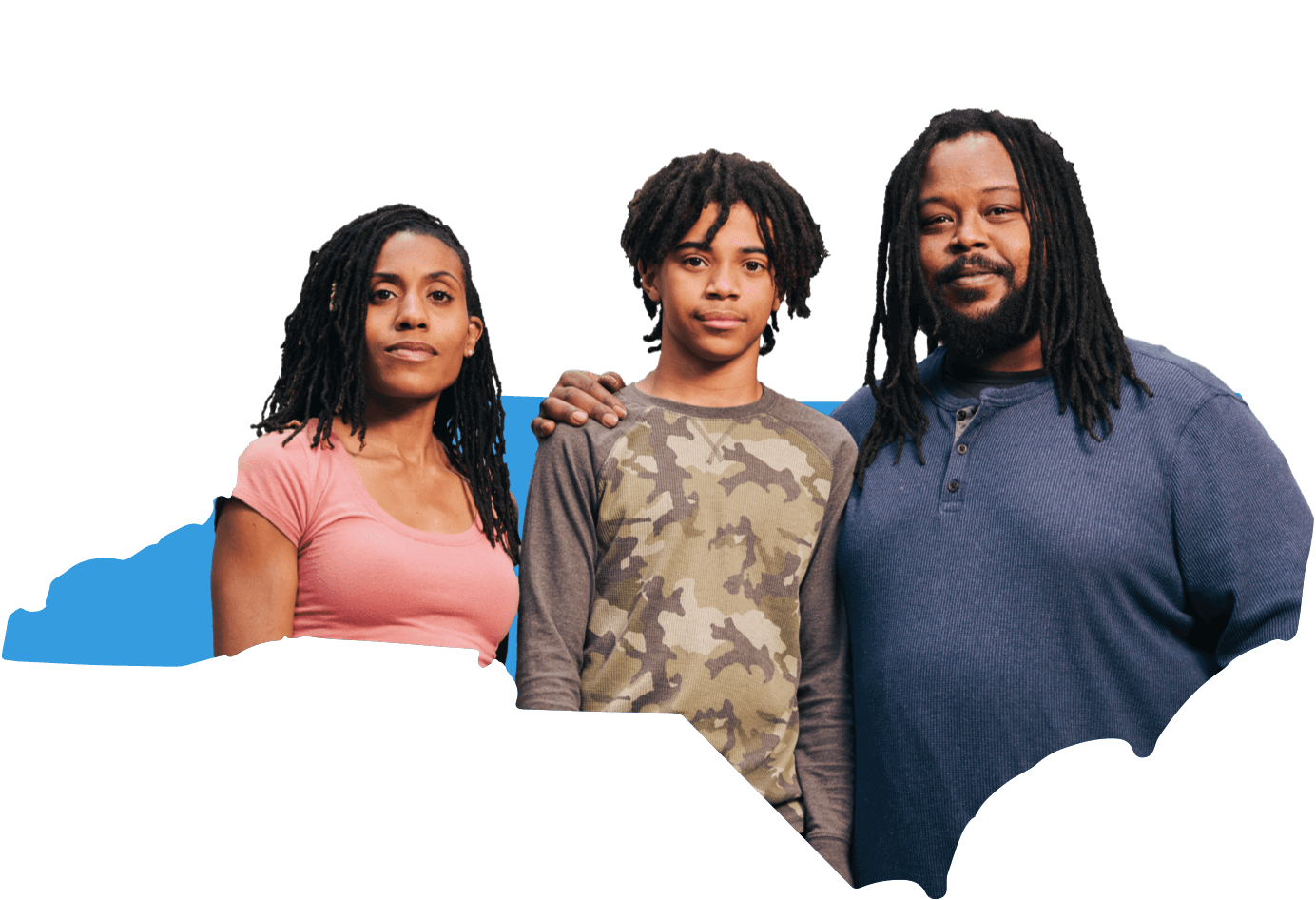
Rising pediatric firearm mortality rates, decades of inaction on research, and a hopeful program in NC
(CNN Health, Deidre McPhillips with NC Pediatric Society, NC S.A.F.E, and NCDHHS) — More children die from guns than anything else in the United States, but relatively little funding is available to study how to prevent these tragedies.
From 2008 to 2017, about $12 million in federal research awards were granted to study pediatric firearm mortality each year – about $600 per life lost, according to a study published in Health Affairs. Motor vehicle crashes, the leading cause of death among children at the time, received about $26,000 of research funding per death, while funding to study pediatric cancer, the third leading cause of death, topped $195,000 per death.
By 2020, firearm deaths in the US had reached record levels and guns had surpassed car crashes to become the leading cause of death among children. More than 4,300 children and teens died from guns in 2020, according to data from the US Centers for Disease Control and Prevention – a 27% jump from 2017, and a number that has only continued to rise. But federal dollars haven’t followed proportionately.
Congress has earmarked about $25 million for firearm injury prevention research each year since 2020, split evenly between the CDC and the National Institutes of Health. Even if all of those dollars were spent on studies focused on pediatric deaths from firearm injury, it’d still be less than $6,000 per death.
Decades of stalled progress
When the Parkland school shooting happened in 2018, more than two decades had passed since Congress had dedicated federal funding to research firearm injury prevention. A legislative provision enacted in 1996, known as the Dickey Amendment, specifically prohibits the use of federal funds to advocate or promote gun control, but it had a chilling effect on firearm injury research overall.
In March 2018, a month after Parkland, Congress included a report on the Dickey Amendment in a spending bill, clarifying that it does not prohibit research on the root causes of gun violence. But it wasn’t until 2020 that the budget actually included money specifically for this purpose.
In the nearly quarter century that it took to unwind uncertainties in the interpretation of the provision – a period of time that included Columbine, Sandy Hook and many more deadly shootings – guns killed 789,000 people in the US, including 75,000 children and teens.
After decades of stalled progress, new research shows that the recent bump in federal funding – incommensurate, as it may be – aligns with a rise in all kinds of related work.
From 2020 to 2022, there were about 90% more registered clinical trials and publications related to firearm injury prevention research than there were from 2017 to 2019, according to a research letter published Wednesday in JAMA Surgery. About half were funded and half were unfunded.
For Dr. Megan Ranney, dean of the Yale School of Public Health, progress in the field of firearm injury research is a “dance between hope and frustration.” Ranney, who is also an emergency physician, was involved in both the new research and the earlier study analyzing the federal dollars invested into the leading causes of death among children.
“We know that the $25 million that has been appropriated to NIH and CDC is a drop in the bucket compared to the magnitude of the problem, and compared to the funds that are put into other similar diseases and injuries,” she said. “But nonetheless, it was worth saying, ‘Did this investment make a difference?’ And I was actually quite heartened in the analysis to see this huge correlation between federal funding and the number of publications and studies being initiated.”
Federally-funded research is the gold standard
Federal funding helps destigmatize work on a topic, experts say.
Many researchers who focus their work on firearm injury said they were consistently advised by mentors, colleagues and others to pick a different field of study – as recently as a few years ago.
“As I was just starting out as a researcher, I was advised to steer my research towards areas that will have consistent funding in order to be able to launch a career that is sustainable. The risk is that there will be so many stops and starts to this kind of work until there can be a consistent funding stream,” said Dr. Jennifer Hoffmann, an emergency physician at Lurie Children’s Hospital of Chicago and an assistant professor at Northwestern University.
“It’s a really hard area to start investing a research career, and we’ve lost a whole generation of researchers. We need to start from scratch and entirely rebuild the research workforce.”
Backing from the CDC and NIH also helps validate the strength of the research, thanks to the rigorous project selection process and peer-review system for findings. The extra dollar amounts also allow for researchers to be more ambitious with their work.
In 2019, a group of researchers published a special report in JAMA Pediatrics outlining dozens of urgent research questions to guide a research agenda to better understand firearm injury prevention as a “critical step for reducing pediatric mortality.”
Without federal funding, researchers have done their best to cobble together the public data that is available to start to answer these questions – many without dedicated time or pay for the work.
The CDC’s National Violent Death Reporting System has been an important source, for example. The agency has a separate stream of funding for the dataset, which tracks some specific details about gun deaths, but significant gaps remain.
“The questions that we’re asking and answering are important but they’re just kind of the tip of the iceberg,” Ranney said. “I wish we could go faster and farther.”
In 2020, the CDC was able to fund 16 awards to study firearm injuries with the $12.5 million allocation from Congress.
“Everybody has realized that firearms are a leading mechanism for violent deaths, that has never been questioned. I think what has been harder to say is what can we do about it,” said Dr. Debra Houry, CDC’s chief medical officer.
People haven’t always viewed firearm violence or suicides as preventable, she said. The same perceptions were true for motor vehicle crashes, until research built the scientific evidence to show otherwise – and the hope is that the investments in research offer solutions and help shift perceptions around gun deaths, too.
Political views around firearms have also affected research funding, but preventing firearm injuries and deaths doesn’t have to infringe upon legal firearm ownership, experts say.
“We talk to a lot of people about how to keep their kids safe around pools. We don’t tell them they can’t own a pool,” said Dr. Patrick Carter, an associate professor at the University of Michigan and co-director of the university’s Institute for Firearm Injury Prevention. “Same thing is true of cars. Same thing is true of medications.”
But reducing deaths from car crashes, for example, required looking at the problem from lots of different angles – including seatbelts, airbags, changing driver behavior around drinking and driving, building safer roads – and the same approach will be needed for firearm deaths, he said. But the field is far from that point right now.
“Building that capacity is really critical to moving the needle and reversing the trends that we’re seeing,” Carter said. “It can’t be 12 people around the country doing (full time) research, it really has to be many more than that.”
Good research also takes time. Some of the researchers that the CDC funded in 2020 are just starting to release findings, including a new study from January with early data showing that systems that let schoolchildren report anonymous tips help prevent school shootings and suicides.
Consistent investment is critical to consistent progress, experts say.
“If there isn’t continued funding (from Congress), that research would stop midway. Continued funding will continue to support this work. Increased funding would allow us to find even more competitive applications because there’s been such interest in this,” CDC’s Houry said. “So we will do the best with whatever budget we have. But certainly, if there aren’t dollars for this, we will not be able to continue this work and some of it will stop immediately.”
The North Carolina Department of Health and Human Services is working to improve rates in NC
It only takes a moment for a tragedy to happen. Fortunately, it only takes a moment to help prevent one as well. Protect kids and communities by safely securing your firearms. Too many guns are falling into the wrong hands. Firearms are now the leading cause of injury-related death for children and youth in the state, and gun thefts are on the rise. If you own a firearm, make sure it’s safely secured.
NCDHHS has introduced the NC S.A.F.E. program to teach gun owners how to keep their firearm safely secured. Click here to learn more: SAFE STORAGE 101.
State Health Director, R. Betsey Tilson says “Launching of the firearm safe storage campaign (was) one of the recommended policies in the white paper. This is an area of general consensus around addressing firearm violence. Areas that require safe storage report a drop in unintentional deaths related to firearms of up to 59% and an estimated 32% of youth firearm suicides and unintentional firearm deaths could be prevented through safe storage. 20% of all car break-ins committed by juveniles last year were for the purpose of stealing a firearm. This is double the rate from just three years earlier.”

The North Carolina Pediatric Society has made safe storage a priority, including a presentation from Dr. Rebecca Palmer at a recent meeting. Palmer presented strategies for counseling about safe storage including offering gun locks without preview questions. NCDJJDP Dept. Secretary William Lassiter brought 500 gun locks to distribute and noted their website had videos on how to use gun locks, and that the gun locks were very simple to install. Display gun locks were available on the registration table outside the meeting room. A family happened to walk by the table, and the child was looking at the locks, picked one up and asked “what’s that?” NCPEDS President Dr. Kenya McNeal-Trice was there, told the family they were gun locks and asked “Do y’all need any?” The grandfather with the family said he had three guns at home but only one lock. Dr. KMT said, “Then it sounds like you need two more, please take two!” The father replied, “they look complicated.” Dr. KMT said that she had just been learning about how simple they are to use and encouraged the grandfather to practice becoming comfortable stating, “if you could handle a gun, you could definitely handle a gun lock.” The family took two gun locks! The entire encounter took about 30 seconds and the family was very appreciative!
